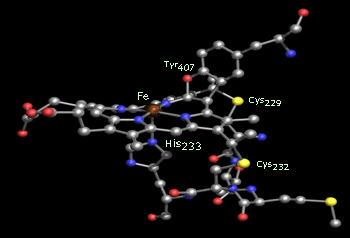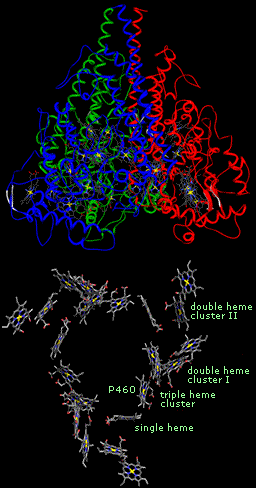Bioinorganic chemistry
Model compounds for the active site of hydroxylamine oxidoreductase
The design of water-soluble, amine and imine macrocyclic ligands is a bioinorganic approach to synthesize simple inorganic analogues to the active site P-460 of Hydroxylamine Oxidoreductase (HAO). This enzyme HAO catalyzes the four-electron oxidative conversion of hydroxylamine to nitrite in the biological nitrogen cycle. The exploration of the complexes’ reactivity towards substrates such as NH2OH, N2H4, N2O, and NO is envisioned. The ultimate goal of this research is to broaden our understanding of the interplay of the active site, covalently bound and potentially redox-active side-chains, metal-metal interactions, and electron acceptors during the course of the hydroxylamine oxidation.


